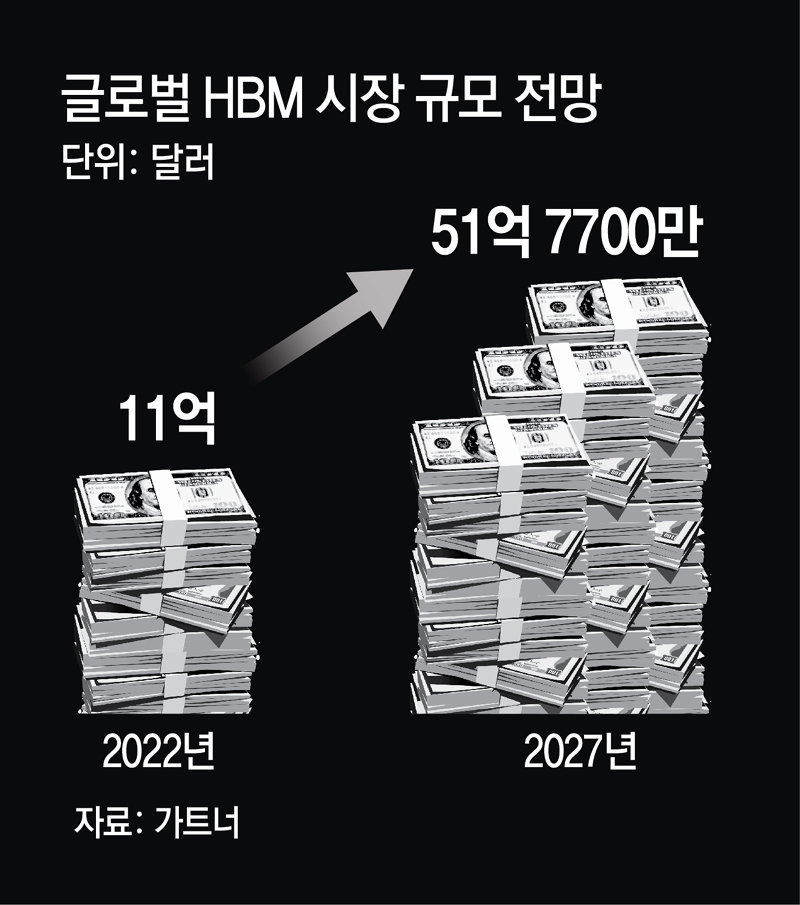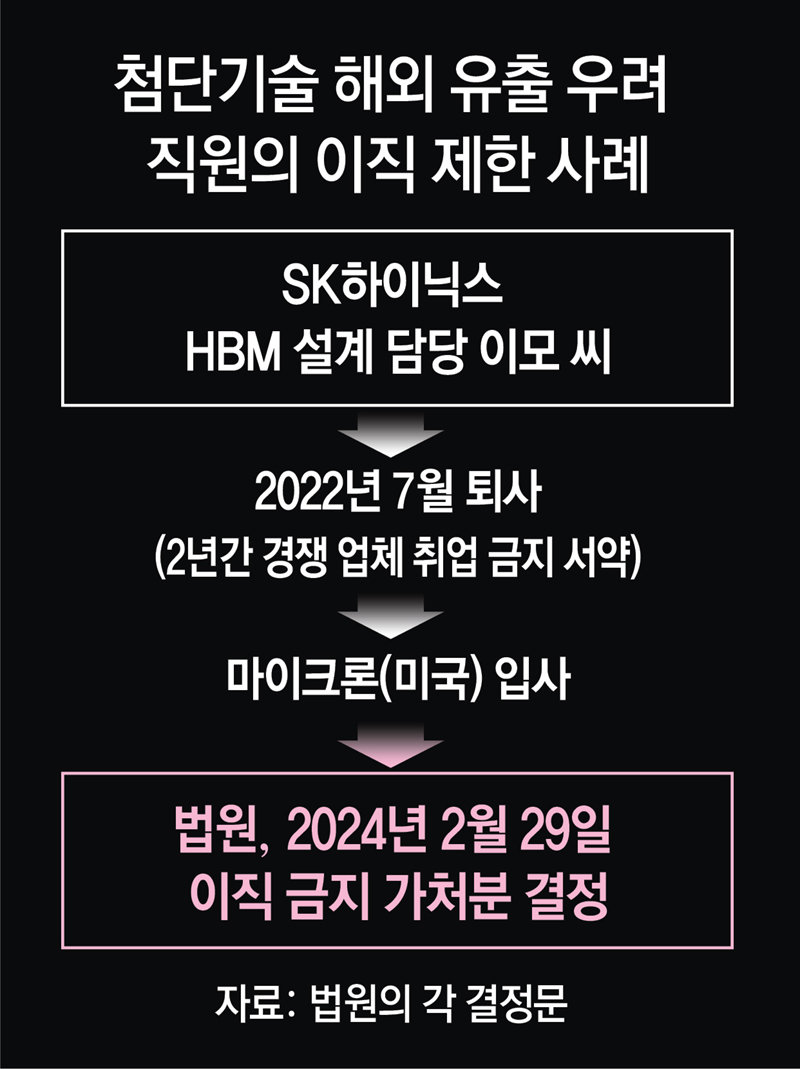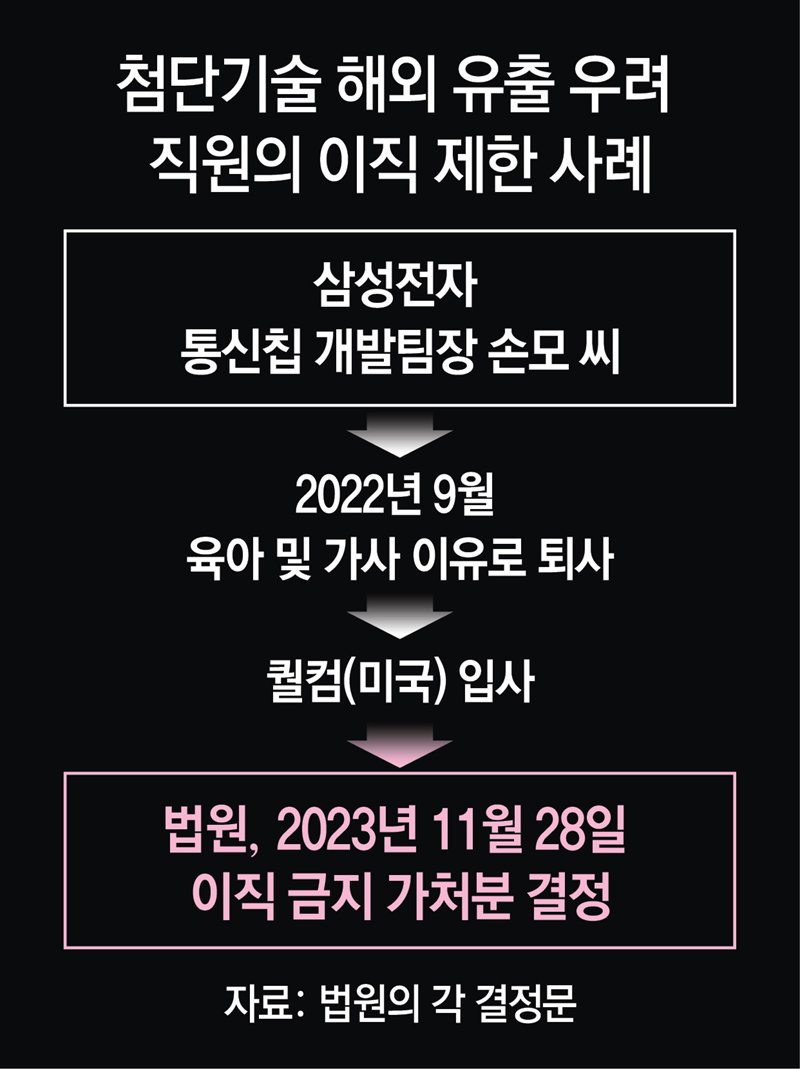[글로벌 칩 워]
“Delivery to NVIDIA” announced last month
Micron was lagging behind Samsung and SK… Skipping the 4th generation and going straight to the 5th generation chip
Court: “Break the oath and move, ban on changing jobs…” “In case of violation, give SK 10 million won per day.”


It was revealed that a key researcher at SK Hynix, which supplies advanced artificial intelligence (AI) semiconductors to Nvidia, had transferred to an executive position at Micron, an American latecomer, and the court belatedly put the brakes on the transfer. They were concerned that the technology of SK Hynix, the No. 1 player in the high-bandwidth memory (HBM) market, which is essential for AI driving, could be leaked to overseas competitors. Micron, which had a minimal presence in the HBM market divided between SK Hynix and Samsung Electronics, announced at the end of last month that it had succeeded in mass producing ‘HBM3E’, the next-generation HBM, for the first time in the world, beating both companies. In the industry, there is an analysis that Micron’s ability to mass-produce the 5th generation AI chip may have been influenced by securing technology through recruiting key talent.



According to the legal and business circles on the 7th, on the 29th of last month, Civil Division 50 of the Seoul Central District Court (Chief Judge Kim Sang-hoon) cited SK Hynix’s application for a temporary injunction against former researcher Mr. Lee. The court decided that if Mr. Lee violates this, he must pay 10 million won per day to SK Hynix. At the time of the court’s decision, Mr. Lee was working as an executive at Micron’s headquarters.
Mr. Lee worked at SK Hynix for over 20 years and led the design of HBM. SK Hynix, ranked second in the entire memory semiconductor market, has emerged as a leader in the HBM market by supplying the 4th generation HBM ‘HBM3’ to NVIDIA’s graphics processing unit (GPU), which is essential for ‘Chat GPT’.
In July 2022, around the time of his retirement from SK Hynix, Mr. Lee signed a non-change of job agreement and a pledge to maintain confidentiality of national core technologies, but he violated them. The agreement specifically listed competing companies subject to a transfer ban, including Micron, and also specified a two-year period for the transfer ban. SK Hynix confirmed Mr. Lee’s transfer to Micron in August last year and filed a provisional injunction with the court to prohibit his transfer.
The court said, “The technology in the memory semiconductor field is designated as a national core technology, so there is a public interest that warrants the transfer ban agreement to be considered valid,” adding, “If the information known to Mr. Lee is leaked, it will be necessary for Micron to have equivalent business capabilities.” “The time it takes to achieve this can be shortened, but on the other hand, SK Hynix’s competitiveness has been significantly damaged and it will be impossible to recover,” he said on the background of the decision.
SK Hynix’s legal representative said, “The fact that the court upheld the 10 million won enforcement fee requested by the creditor (SK Hynix) as is is because the court was careful to understand the damage that the creditor would suffer if Mr. Lee does not comply with the change of job ban. “It is interpreted that,” he said.
In the semiconductor industry, there is an analysis that the reason why Micron was able to skip the mainstream model, the 4th generation HBM, and go straight to the 5th generation and begin mass production for the first time in the world, was that narrowing the technology gap in a short period of time through leaked technology may have had an impact. It comes out. The HBM market share in 2022 was SK Hynix (50%), Samsung Electronics (40%), and Micron (10%). However, Micron announced late last month that it would mass produce HBM3E, a next-generation AI semiconductor memory, and supply it to NVIDIA. An industry insider said, “There are stages in semiconductor production, and it is difficult to secure advanced technology overnight.” He added, “However, if we have received various technology infusions from outside, the story is different. “Micron may also have tried to play catch-up in a short period of time by recruiting talent,” he said.
As the competition for global technological hegemony intensifies, attempts to leak technology through recruiting key talent in high-tech industries are expected to continue. Hae-seong Yoon, a senior researcher at the Korea Institute of Criminology and Legal Policy, said, “The atmosphere in which courts are increasing the binding force of transfer prohibition agreements is quite positive.” He added, “Companies are also establishing a strong monitoring system for talent outflow, and the judiciary is also taking action against technology leak crimes.” “There must be an atmosphere of strong punishment,” he said.
Source: Donga
Mark Jones is a world traveler and journalist for News Rebeat. With a curious mind and a love of adventure, Mark brings a unique perspective to the latest global events and provides in-depth and thought-provoking coverage of the world at large.